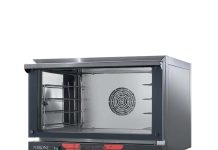Physical hazards: presence of foreign bodies
 Physical hazards refer to accidental food contamination with foreign objects (such as pieces of glass, metal, plastic, or wood), and biological objects (insects, fragments of reptiles or rodents, etc). While the microbiological and chemical hazards are almost always taken into account and often monitored continuously, the physical hazards can result from accidental events, and are not easily foreseeable, so that they cannot always be avoided even with the best preventive systems. Furthermore, while a microbiological or – above all – chemical contamination of minor level may not be noticed by consumers, the presence of a foreign body in food triggers an immediate sense of revulsion and loss of consumer confi dence in the manufacturer. In case of such a non-conformity, the manufacturer’s damage in terms of numbers would certainly be limited (the presence of fragments generally covers only a few packages), but no less serious than the damage to the consumer, to business customers if the food is within a production chain, and, inevitably, damage to the image. Physical hazards, like microbiological and chemical hazards, can be reduced by implementing good prevention and product/process quality management systems, including accurate selection of raw materials, constant maintenance of production plants; early identifi cation of possible sources of foreign bodies; personnel training, etc.
Physical hazards refer to accidental food contamination with foreign objects (such as pieces of glass, metal, plastic, or wood), and biological objects (insects, fragments of reptiles or rodents, etc). While the microbiological and chemical hazards are almost always taken into account and often monitored continuously, the physical hazards can result from accidental events, and are not easily foreseeable, so that they cannot always be avoided even with the best preventive systems. Furthermore, while a microbiological or – above all – chemical contamination of minor level may not be noticed by consumers, the presence of a foreign body in food triggers an immediate sense of revulsion and loss of consumer confi dence in the manufacturer. In case of such a non-conformity, the manufacturer’s damage in terms of numbers would certainly be limited (the presence of fragments generally covers only a few packages), but no less serious than the damage to the consumer, to business customers if the food is within a production chain, and, inevitably, damage to the image. Physical hazards, like microbiological and chemical hazards, can be reduced by implementing good prevention and product/process quality management systems, including accurate selection of raw materials, constant maintenance of production plants; early identifi cation of possible sources of foreign bodies; personnel training, etc.
Metal inclusion prevention procedures: metal Detector
Metal contamination in food can be very dangerous to the consumer, as they can cause injury to the teeth and gums, as well as more serious damages when ingested, if the fragments are sharp or pointed. Their presence can be considerably reduced or almost eliminated thanks to the continuous in-line control by means of “metal-detectors”, as each package can be controlled individually. Metal detectors have become indispensable tools for food processing fi rms in order to comply with the requirements of voluntary certifi cations and as self-protection from possible non-conformities caused by the presence of metal foreign bodies in processed foods or in the raw materials, semi-fi nished products and packaging materials delivered by their suppliers. Contamination can derive from a variety of sources, and even an accurate visual inspection might not be able to detect the presence of small metal parts. Most industrial metal detectors are based on the socalled “balanced coil” concept: three coils are mounted inside the detecting head; one produces a modulated electromagnetic field, whereas the other two receive this signal and detect any changes caused by the presence of metal parts among the products passing through. A passing metal part causes a disturbance of the electromagnetic fi eld received by the coils.



